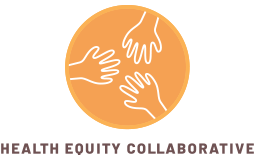18 Jun Amid pandemic, New Action on Insulin Affordability Offers Minority Communities a Glimmer of Hope
June 18, 2020
The Centers for Medicare and Medicaid Services (CMS) just announced a new plan that will go a long way towards improving the lives of elderly Americans with diabetes.
Effective 2021, every state in the country — plus the District of Columbia and Puerto Rico — will offer at least one health plan to seniors that limits out-of-pocket insulin costs to just $35 per month. Nationwide, more than 1,750 health plans will participate in the program.
The reform is a triumph for America’s diabetics. By reducing what these patients pay at the pharmacy, it will help protect the health of the nation’s most vulnerable. But more can always be done — it’s important that lawmakers continue to seek out solutions that provide all Americans with affordable medication.
For many who suffer from diabetes, regular access to insulin is essential to staying healthy. Unfortunately, members of America’s communities of color often face numerous barriers to obtaining the lifesaving medication.
Hispanic Americans are 66 percent more likely than non-Hispanic whites to develop Type 2 diabetes, meanwhile African Americans are over 75 percent more likely. Similarly, African American and Hispanic Medicare beneficiaries suffer from the illness at greater rates than do white beneficiaries.
Members of these same demographics are also likely to have lower incomes. Of the 42 million Americans living in poverty in 2017, over 26 percent were Hispanic or Latino — despite making up just 18 percent of the national population. That same year, African Americans accounted for more than 21 percent of Americans living in poverty, even though they comprised less than 13 percent of the total population.
As a result, minority Americans who suffer from diabetes often fail to access the insulin they need to manage their condition. A 2019 survey from the Journal of the American Medical Association found that a quarter of diabetic patients who had been prescribed insulin said its cost led them to skip doses, take less than prescribed, or stop treatment altogether.
The new CMS plan will provide a lifeline to these groups. Beneficiaries will save $446 a year, on average. But it’s just the first of many reforms needed to lower prescription medication costs for patients.
An important next step would be to crack down on the opaque practices of supply chain middlemen — pharmacy benefit managers (PBMs).
PBMs are hired by insurers to help decide which drugs a given plan will cover. In return for providing manufacturers with a large customer base, PBMs are able to negotiate massive discounts well below the list price of a drug. In 2018, these discounts totaled $166 billion.
Unfortunately, patients rarely see these savings at the pharmacy. PBMs pocket a portion for themselves and pass the rest to insurers. Insurers, in turn, use them to reduce monthly premiums by a few dollars — but that does nothing to lower their out-of-pocket spending. Because the discounts negotiated by PBMs are undisclosed, insurers still charge patients a copay for their medication based on the drug’s original — and higher — list price.
A reform that requires PBMs and insurers to share discounts directly with consumers at the point of sale would help millions of Americans afford their insulin — and other necessary prescription medications.
Simple yet bold steps like these will go a long way towards improving Americans’ health. CMS has already shown it’s committed to helping those in need. Let’s hope it continues to do so.


